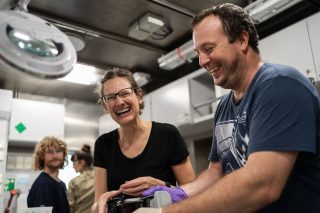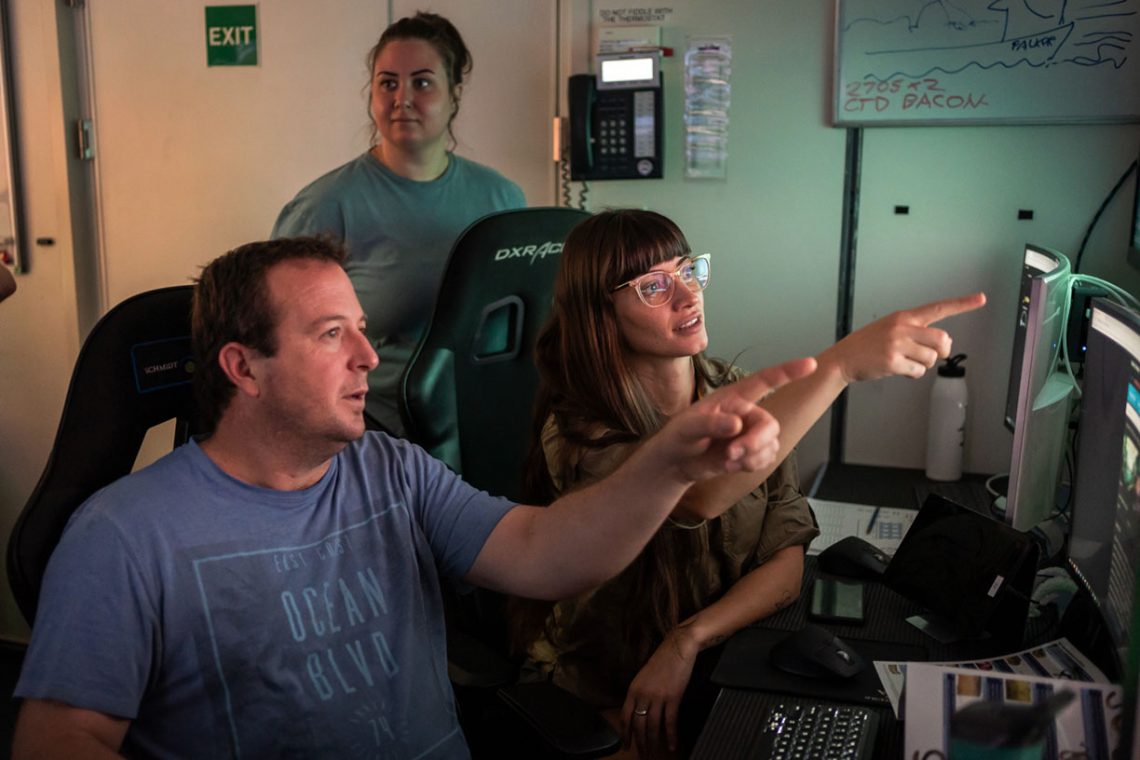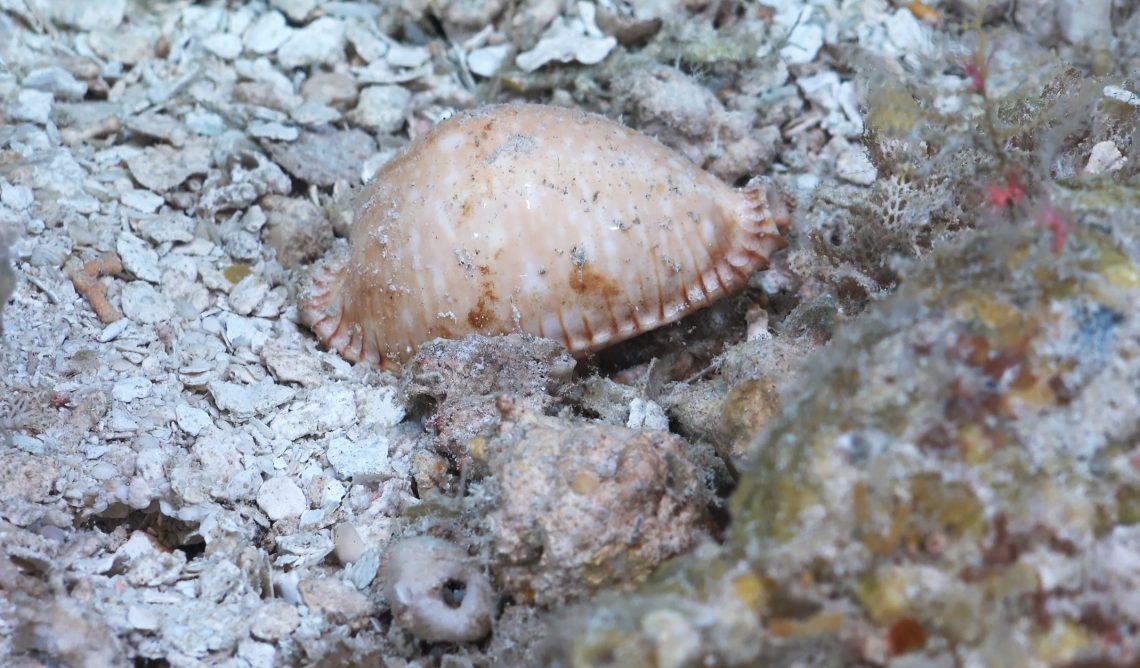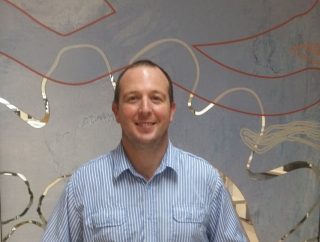This July marks 20 years for me working at the Western Australian Museum. It has been a fantastic journey so far, working with animals and visiting places very few get to see. My primary role at the museum is caring for, and registering the extensive Mollusc Collection, a diverse group that in the marine waters includes animals such as snails, slugs, squids, and clams – just to name a few. With around 2,500 trays of dry shells and 150,000 ethanol-filled specimen jars, it is a big job too!

When the opportunity came up to survey Ashmore Reef aboard R/V Falkor, I jumped at the chance. After 20 years in the job, this is the pinnacle of marine field trips for me. But not too much time for reflection, as my work is well underway here at Ashmore.
As soon as the ROV hits the seafloor, I am meticulously logging specimen data and capturing images. Museums are all about accuracy, and keeping detailed specimen records is our bread and butter. Once the ROV hits the deck, I am carefully transferring the deep mysteries to cool seawater to ensure they are in the best condition possible while I wait to process them. I then assign each specimen with a unique Museum Registration Number which is recorded in a field logbook. Photography is next; I place each specimen in a black dish with water, and set about capturing beautiful clear images, a task not easy with a rocking boat! I then take a small piece of the animal, often their foot, and place it in 100% ethanol for future DNA work. The remainder of the animal is then preserved in small containers, often in ethanol, and packed safely into transportable blue drums. Fortunately, I am not alone in this process and have help from several students who appreciate the tips and tricks I pass on.

The beauty about this trip for me is the ROV can access depths beyond SCUBA diving, and this presents a prime opportunity to collect some rare and special goodies. And it did not take long with the collection of a beautiful cowry shell from the third dive down at 123 metres. It was not familiar to me at first, but with the help of livestreaming, the mollusc science community suggested Perisserosa guttata (the Great Spotted Cowry), and they were indeed correct! A quick check of our records back at the WA Museum, and I realised this was the first record of the species from Western Australia. And who knows, it could even be a new species.

As we head towards the last few days of sampling, the work will not stop for me once I leave the Falkor. I will need to unpack the specimens back at the museum, place them in ethanol-filled jars, and complete identifications. This is done through looking at books and studying other specimens in the collections at the WA Museum. For some specimens, I will want to get DNA sequences so I can better confirm their identifications. I then print labels and put them away on shelves. The final cog in all this process is taxonomy—describing any new species I may have uncovered. And this is what really puts a smile on my face.

